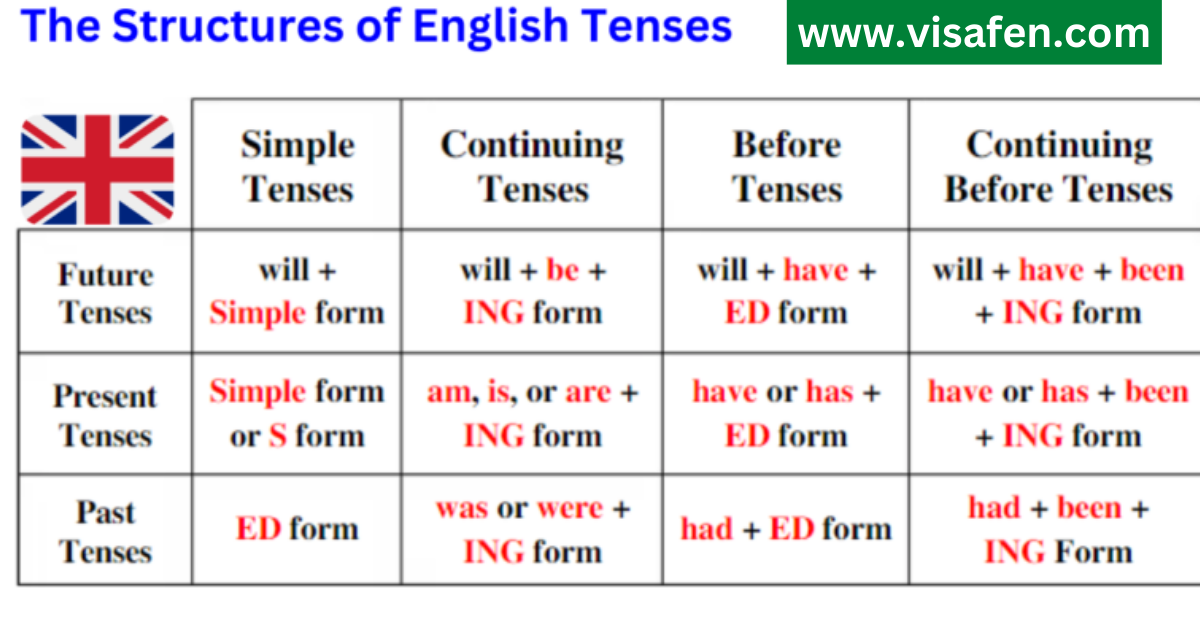Present Perfect Continuous Tense
Learn English tenses – Present Perfect Continuous Tense
The English Tense System
The links below are to lessons for each of the 12 basic tenses.
In each lesson we look at two aspects of the tense:
- Structure: How do we make the tense?
- Use: When and why do we use the tense?
Some lessons look at additional aspects, and most of them finish with a quiz to check your understanding.
Present Perfect Continuous Tense
Future Perfect Continuous Tense
Tenses
We use different tenses to describe the time that the verb refers to.



Present Perfect Continuous Tense
Like the present perfect tense, the present perfect continuous tense (also known as the present progressive) can refer to either the present or the past time. Generally, it refers to actions that happened over a period of time and recently stopped. Sometimes it can be used interchangeably with the Present Perfect Tense, and other times the tense changes the meaning significantly.
We form the present perfect continuous tense by using has or have, followed by been, and then the main verb in present participle form.
| Subject | Has
or Have |
Been | Verb
(present participle) |
Rest of Sentence |
| I/you/we/they | have | been | watching | television. |
| he/she/it/Jane | has | been | watching | television. |
Note: Stative Verbs
Some verbs, called “stative” or “non-continuous” verbs, can’t be used in continuous tenses. Others can be used in continuous tenses, but their meaning changes. Make sure you understand the difference between stative and non-stative verbs while using present perfect continuous and all continuous tenses. You can find more information here.
The Present Perfect Continuous in the Present Time
Ongoing Actions
Like the present perfect, we can use the present perfect continuous tense to talk about an action that was started in the past, but is ongoing or incomplete at the time of writing or speaking. We use for to indicate a duration of the action, and since to indicate a specific time the action started.
- I have been living in California for three years.
- How long have you been waiting here?
- We have been cooking since the morning.
Some of these have the same meaning in Present Perfect and present perfect continuous.
When describing biographical data using “for” or “since,” you can use either one:
- I have been living in California for three years.
- I have lived in California for three years.
When you use the present perfect continuous, it implies a shorter-term duration:
- I have worked on boats since I was young. (present perfect; long-term)
- I have been working on this boat for three weeks. (present perfect continuous; short-term)
Describing Actions that have been Happening Recently
You can use any duration of time with the present perfect continuous, but if you don’t specify how long something has been happening, the assumption is that it has been happening “recently” or “lately.” You can add these words to emphasize the currentness of the action.
- I have been swimming a lot these days.
- It’s been snowing a lot in New York.
- What have you been learning?
- Jocelyn has been exercising more recently.
- How have you been doing?
The Present Perfect Continuous in the Past Time
Describing Actions that have Just Stopped
If you are talking about events that just stopped, and often have some visible result in the present use the continuous tense:
- I have been riding my bike, that’s why I’m so sweaty.
- Why are you covered in flour? – “I’ve been baking.”
Often, using the present perfect continuous describes an action that has just stopped, but isn’t fully completed. In these cases, the present perfect would describe the same action as completely finished.
- I have been writing my novel. (Meaning: I spent some time working on it, but I’m done for now.)
- I have written my novel. (Meaning: It’s finally finished!)
The present perfect continuous can also be used to emphasize that something happened repeatedly.
- Your mother has been calling. (Meaning: Your mother called several times, though she has stopped now.)
- You mother has called. (Meaning: Your mother called once.)
Negative Statements
To make the negative with the present perfect continuous tense, just add “not” after “has” or “have.” You can also use the contractions “haven’t” and “hasn’t.”
- I have not been going to class.
- She hasn’t been eating enough.
- They haven’t been dating for long.
Question Forms
Information Questions about the Subject
To make a question about the subject of a sentence, use a question word as the subject. the form is: question word + “have/has” + been + main verb (ing) + rest of sentence:
??? has been playing video games. –>
Who has been playing video games?
??? people have been living here. –>
How many people have been living here?
???’s brother has been fixing the car. –>
Whose brother has been fixing the car?
Questions about the Verb or Words after the Verb
To make a yes/no question about the verb or words after the verb with the present perfect continuous tense, put “has “or “have” before the subject.
Have you been seeing a doctor?
Have I been making dinner?
Has she been hiking in the mountains yet?
To make an open-ended question about the verb or words after the verb with the present perfect continuous tense, put a question word (who, what, where, when, why, how) before the “has “or “have” and subject:
Where have you been traveling?
Why has she been crying?
What games have you been playing?